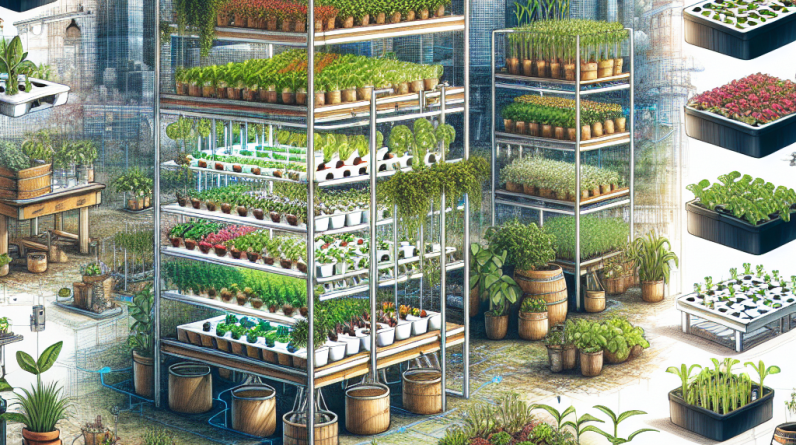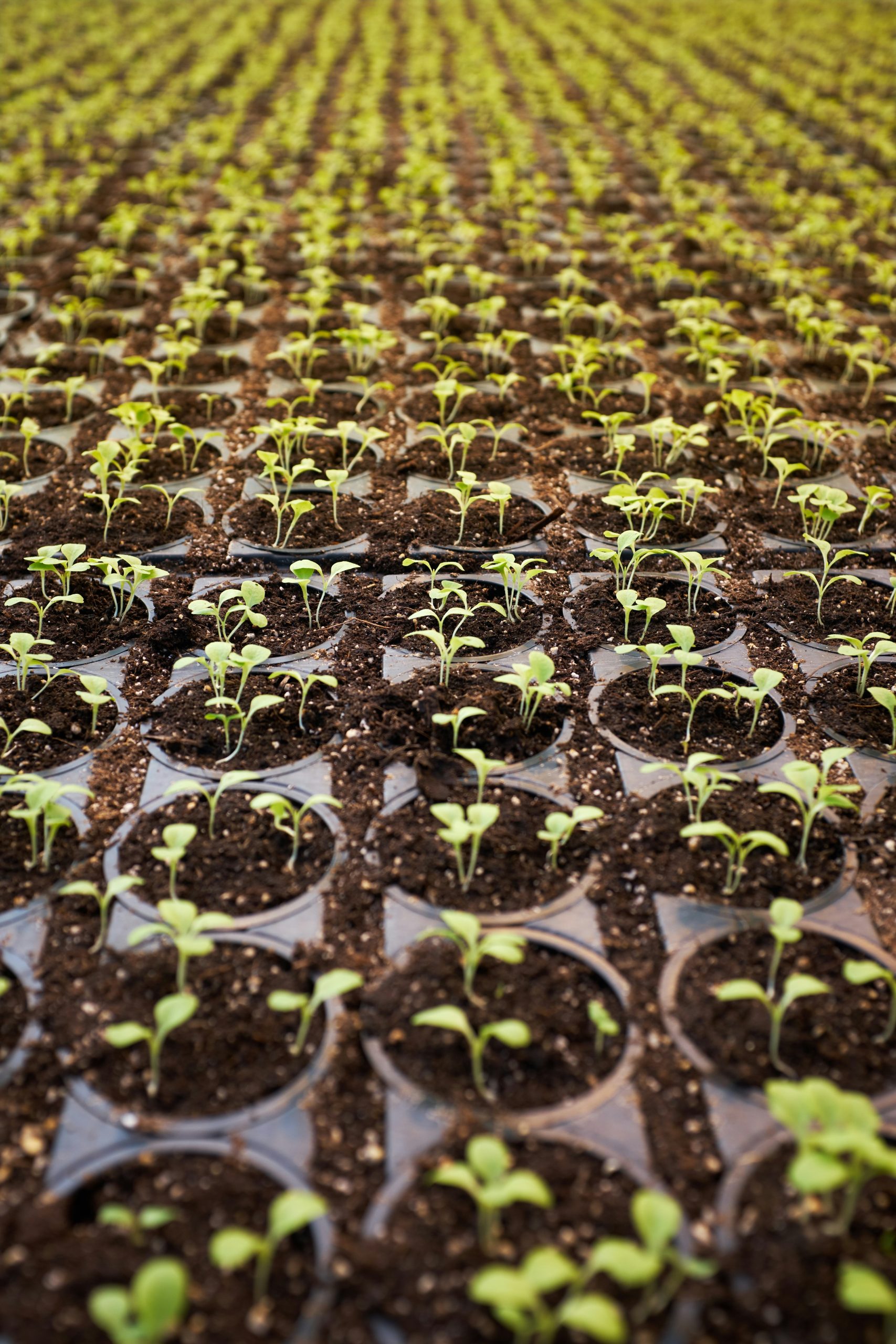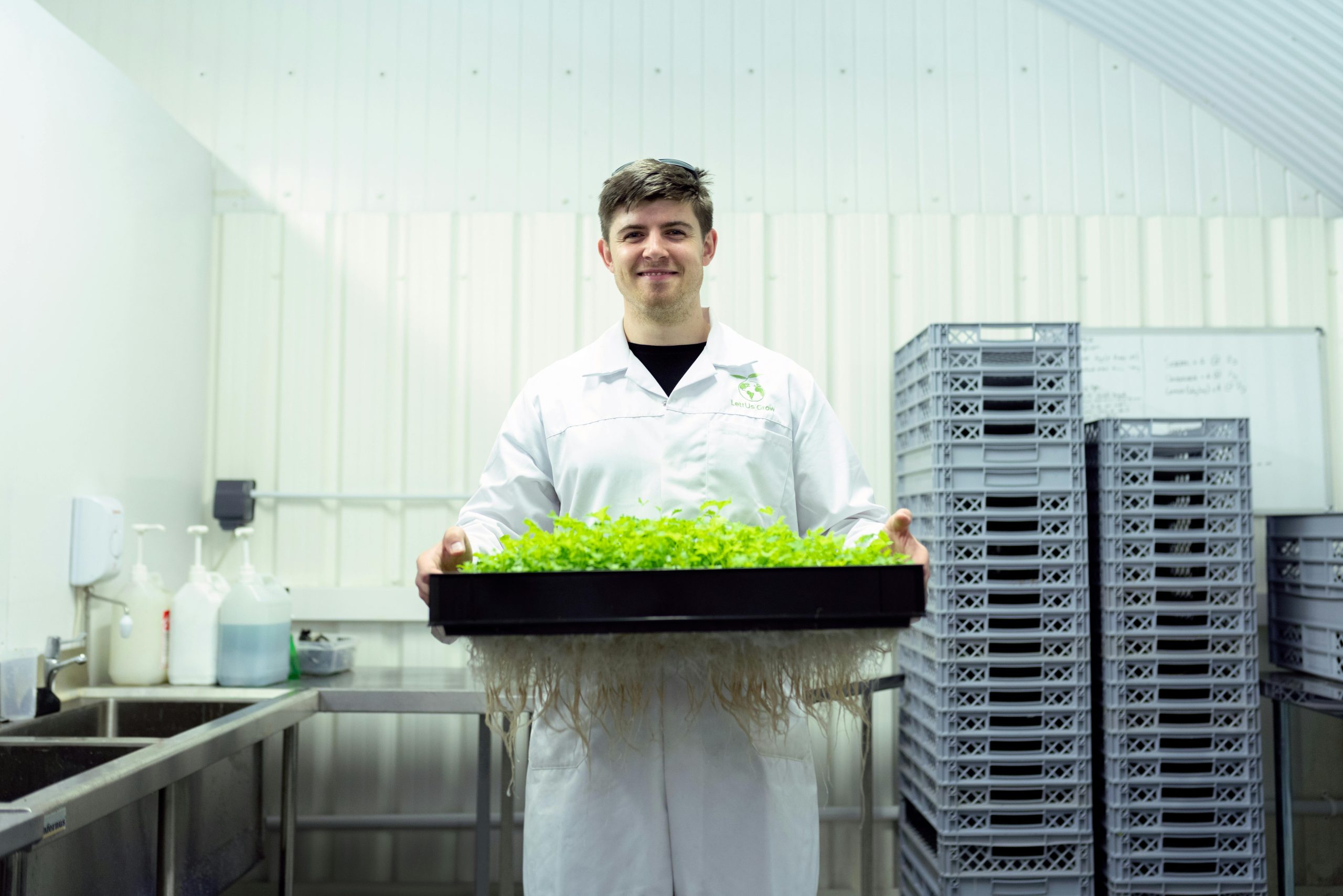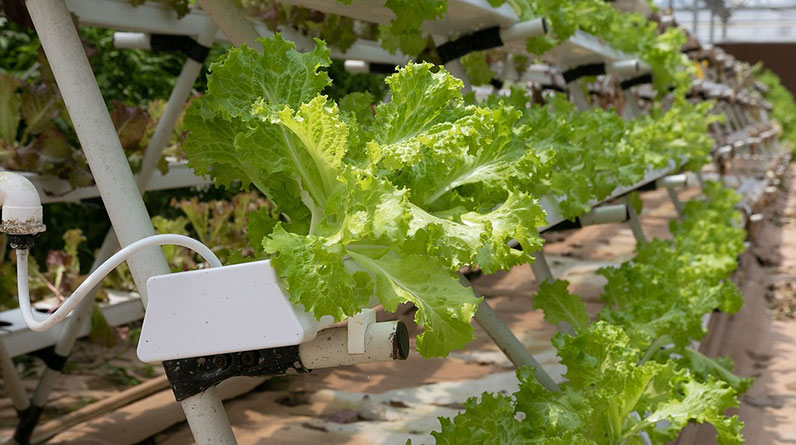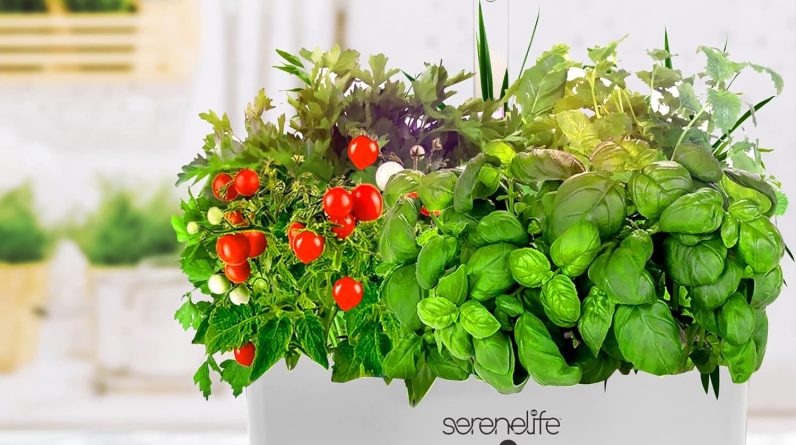
Table of Contents
- 1. LED Grow Lights
- 2. Full-Spectrum Grow Lights
- 3. HID Grow Lights
- 4. Quantum Board Grow Lights
- 5. Plasma Grow Lights
- 6. Compact Fluorescent Grow Lights
- 7. Smart Adjustable Grow Lights
- 8. Vertical Hydroponic Grow Lights
- 9. Energy-Efficient LED Grow Lights
- 10. Bloom-Specific Hydroponic Grow Lights
1. LED Grow Lights
Introduction to LED Hydroponic Grow Lights
LED grow lights have revolutionized hydroponic gardening due to their energy efficiency and customizable spectra. In 2025, LED technology continues to lead the market as the most popular choice among growers. These lights consume significantly less power compared to traditional lighting options while providing high-intensity illumination tailored to plant needs.
Many hydroponic growers are shifting toward advanced LED systems for their durability and cost savings. Their long lifespanâoften exceeding 50,000 hoursâmakes them a smart investment for consistent crop production. From beginner setups to commercial farms, LED hydroponic grow lights offer versatility and high performance.
For example, a small home hydroponic garden using LED lights can reduce energy costs by up to 60% compared to HID systems, which is a substantial saving in 2025. If you’re considering upgrading your setup, LED grow lights are a front-runner for efficiency and quality.
Benefits of LED Grow Lights
One of the critical reasons to choose LED hydroponic grow lights in 2025 is their tailored light spectrum. They can emit specific wavelengthsâsuch as blue for vegetative growth and red for floweringâoptimizing plant development. Additionally, LEDs produce less heat, lowering cooling costs and reducing the risk of heat stress on plants.
Another advantage is their scalability; LED panels come in various sizes, perfect for small home projects or large commercial installations. Technology improvements have enhanced their light penetration, ensuring deep canopy coverage and uniform growth.
Recent studies indicate that LEDs can improve plant growth rates by up to 25% while extending the natural growing season. For hydroponic growers aiming for maximum yield in 2025, LED grow lights are essential tools.
2. Full-Spectrum Grow Lights
The Power of Full Spectrum in Hydroponics
Full-spectrum hydroponic grow lights mimic natural sunlight, providing a balanced range of wavelengths necessary for all plant growth phases. In 2025, these lights remain a top choice for growers who want to optimize plant health and productivity. They support everything from vegetative growth to flowering and fruiting, ensuring healthy, vigorous plants.
Using full-spectrum lights results in more uniform growth and improved crop quality. They help reduce stretching and promote stronger stems, which is especially important in hydroponic systems where space and light distribution are critical. Many commercial growers report a 15-20% increase in yields when switching to full-spectrum lighting in 2025.
Investing in adaptable light solutions that offer full spectrum capabilities enables growers to adjust light exposure based on growth stages, maximizing efficiency and crop quality. It’s a proven strategy for successful hydroponic operations.
Choosing the Right Full-Spectrum Hydroponic Grow Lights
When selecting full-spectrum hydroponic grow lights, look for models that deliver a high Photosynthetically Active Radiation (PAR) value. This ensures your plants receive adequate light energy for photosynthesis. Adjustable spectra and dimming features are also valuable, allowing customization per plant type and growth phase.
LED-based full-spectrum lights are preferred for their energy efficiency and spectral accuracy. They often incorporate smart controls or remote connectivity, making them ideal for both novice and expert growers. Additionally, durability and heat management are key factors to consider, as they influence lifespan and performance.
In 2025, many brands incorporate advanced spectral tuning and integrated timers, helping to automate and optimize your hydroponic lighting setup for consistent results.
3. HID Grow Lights
High-Intensity Discharge (HID) Technology
HID grow lights have been a staple in hydroponic systems for decades, offering high lumen output suitable for large-scale cultivation. In 2025, HIDs continue to be relevant, especially for growers seeking powerful lighting at a lower initial investment. They include Metal Halide (MH) and High-Pressure Sodium (HPS) variants, each suited for different growth stages.
Metal Halide lamps emit a bluish light ideal for vegetative growth, while HPS bulbs produce a deep red spectrum perfect for flowering. Many growers combine both for comprehensive coverage. Despite the rise of LEDs, HIDs remain a cost-effective option, particularly for large or commercial systems due to their high light intensity.
However, HIDs consume more electricity and generate more heat, leading to higher cooling costs in 2025. Proper ventilation and reflective hoods are necessary for optimal performance and plant safety.
Pros and Cons of HID Grow Lights in 2025
HID lights provide intense light penetration, supporting dense canopies in hydroponic gardens. They are also widely available and proven in the industry. Nevertheless, their significant energy consumption and heat output can be drawbacks. The lifespan of HID bulbs is also shorter, typically around 10,000-20,000 hours, compared to more modern LED solutions.
Despite these limitations, HIDs remain useful in specific applications, such as large commercial farms where initial costs and light intensity are a priority. Proper care and system design are essential to mitigate heat issues.
If you’re considering HID grow lights in 2025, ensure your system can accommodate their power and cooling requirements for optimal results.
4. Quantum Board Grow Lights
What Are Quantum Boards?
Quantum Board grow lights are a modern type of LED lighting that features an array of high-efficiency diodes mounted on a flat, low-profile board. They are highly regarded for their uniform light distribution and energy efficiency. In 2025, quantum boards are among the top choices for hobbyist and commercial hydroponics.
Designed to maximize light coverage over large areas, quantum boards can be daisy-chained for expanded setups. Their low heat output and high PAR levels make them a versatile solution for various grow spaces, from small indoor gardens to extensive vertical farms.
Many leading manufacturers have introduced smart controls integrated with quantum boards, allowing precise dimming and spectrum tuning, perfect for optimizing plant growth in 2025’s advanced hydroponic systems.
Advantages of Using Quantum Board Grow Lights
Quantum boards offer superior energy efficiency, often consuming 50% less power than traditional HID lights for comparable PAR output. This translates to significant savings on electricity bills and lower environmental impact. Their long lifespanâoften exceeding 50,000 hoursâreduces replacement costs.
Enhanced light uniformity results in more consistent growth across the canopy, reducing shaded areas and promoting even development. They are also easy to install and adjust, making them user-friendly for growers of all experience levels.
If you’re aiming for optimal results in your hydroponic setup in 2025, investing in quantum board grow lights can contribute to higher yields and healthier plants.
5. Plasma Grow Lights
Emerging Technology in Hydroponics
Plasma grow lights are an innovative lighting option, utilizing high-temperature plasma arc technology to produce a broad, full-spectrum light. In 2025, they are gaining attention for their intense brightness and improved energy efficiency over traditional HID lamps.
Although plasma systems tend to be more expensive upfront, their longevity and superior light quality can justify the investment for dedicated hydroponic growers. They emit a more natural sunlight approximation, promoting healthier plant growth and development.
Research indicates that plasma grow lights can deliver high PPFD (Photosynthetic Photon Flux Density), essential for maximizing photosynthesis, especially in large-scale hydroponic farms.
Considerations Before Choosing Plasma Lighting
If youâre exploring plasma grow lights in 2025, consider the system’s cost and how it fits your scale. They require specialized fixtures and are best suited for professional applications. Heat management remains critical, as plasma lights can generate significant heat without proper cooling systems.
Another factor is their compatibility with smart control systems, which in 2025 are increasingly integrated to maintain optimal light spectra and intensity. While not as widely adopted as LED options, plasma lights are an exciting frontier for innovative hydroponic growers.
Ensure thorough research and proper system design before investing in plasma grow lights for your hydroponic garden in 2025.
6. Compact Fluorescent Grow Lights
Overview and Uses
Compact fluorescent lights (CFLs) have been a reliable option for small-scale hydroponic setups and starting seedlings. They are affordable, widely available, and emit a decent spectrum of light suitable for early plant stages. In 2025, CFLs are still useful for specific purposes but are generally less favored compared to LEDs for full-cycle growth.
CFLs are especially helpful in tight spaces, such as desk gardens or small grow tents. Their low heat output allows close placement to plants without causing damage, and they are easy to set up for beginner growers.
Despite their convenience, CFLs have lower efficiency and shorter lifespan (~8,000-10,000 hours) compared to modern LED systems, which limits their use as primary lighting in larger or professional hydroponic systems in 2025.
Practical Tips for Using CFLs
Position CFLs close to plants (about 2-3 inches) to maximize light absorption, but monitor heat buildup. Use adjustable reflectors and timers to optimize light cycles, especially for seedlings and clones. For best results, combine CFLs with airflow management to reduce humidity and temperature buildup.
For hobbyists or small indoor gardens in 2025, CFLs provide an economical and straightforward solution. However, for larger, more productive systems, investing in advanced LED options is recommended.
7. Smart Adjustable Grow Lights
Technology and Automation
Smart adjustable hydroponic grow lights combine high-efficiency LEDs with built-in controllers that allow growers to customize spectra, intensity, and timing remotely via apps or automation systems. In 2025, smart lighting technology is more accessible and user-friendly than ever.
This innovation helps optimize plant growth phases, reduce energy consumption, and simplify operations. Features like automatic dimming, spectrum tuning, and scheduling enable precise control, leading to healthier plants and higher yields.
Many commercial hydroponic operations in 2025 rely on these intelligent systems to maintain optimal conditions continuously, reducing manual intervention and improving consistency across crops.
Implementation Tips
When choosing smart adjustable hydroponic grow lights, ensure compatibility with your existing control systems or apps. Look for features like real-time data monitoring and customizable presets. Proper installation and calibration will maximize their benefits.
These advanced lighting systems are especially beneficial for multi-stage growth cycles, where lighting needs change over time. They are also ideal for remote operation, providing convenience and improved crop management in 2025.
8. Vertical Hydroponic Grow Lights
Maximizing Space with Vertical Lighting
Vertical hydroponic systems require specialized lighting solutions capable of reaching multiple plant layers efficiently. In 2025, vertical grow lights are designed with adjustable panels and modular configurations to optimize space use and ensure uniform light distribution.
These systems are popular for urban farming and commercial vertical farms aiming to maximize yield per square foot. They often incorporate high-output LED modules that provide deep light penetration, essential for dense plant canopies.
Properly designed vertical hydroponic grow lights help reduce energy wastage and ensure each plant receives adequate light, boosting overall productivity.
Design and Setup Tips
Select modular lighting systems that can grow with your systemâexpandability is key in vertical farming. Position lights evenly around each layer, and consider reflective materials to maximize light efficiency. Regular maintenance keeps light output consistent and prevents dirt or dust buildup.
Investing in high-quality vertical hydroponic lights can yield significant benefits, including faster growth cycles and increased crop density in 2025.
9. Energy-Efficient LED Grow Lights
Reducing Costs and Environmental Impact
Energy efficiency remains a top priority for hydroponic growers in 2025. Advances in LED technology have led to even more efficient models that deliver higher PAR per watt, reducing electricity bills and environmental footprint. These lights often incorporate innovative driver circuits and heat management systems to maximize performance.
Euro-American brands have been pushing the boundaries of efficiency, with some models achieving over 2.2 μmol/J (micromoles per joule), which is a benchmark for high-quality grow lights today. Reduced energy consumption translates to sustainability and operational savings.
Using energy-efficient hydroponic grow lights also means less cooling load, helping to maintain stable growing environments without costly air conditioning or ventilation systems.
Choosing the Most Efficient Models
For optimal results in 2025, select LED grow lights certified by energy standards, and check their efficacy ratings. Features like dimming, spectrum tuning, and smart controls further enhance efficiency and customization. Pairing these lights with renewable energy sources can make your hydroponic setup even greener.
Ultimately, energy-efficient lighting is essential for sustainable and profitable hydroponic operations in 2025, helping growers achieve maximum yield with minimal resource use.
10. Bloom-Specific Hydroponic Grow Lights
Optimized Lighting for Flowering
Bloom-specific hydroponic grow lights are tailored to promote flowering and fruiting stages, providing the ideal spectrum and intensity for maximum flower production. In 2025, these lights are engineered with precise red and far-red wavelengths, which enhance flowering and improve yields.
Many growers find that adding bloom-specific lights during the flowering phase shortening the cycle and increasing crop quality. These lights can be used as supplemental lighting or as the primary source during the flowering stage.
Advanced models include spectrum tuning and automated controls compatible with other lighting systems, giving growers fine control over their crop’s development in 2025.
Best Practices for Using Bloom-Specific Lights
For best results, switch to bloom-specific hydroponic grow lights once your plants enter the flowering stage. Maintain proper distance from the canopy to avoid light burnâusually around 12-18 inches, depending on the fixture.
Combine bloom-specific lights with full-spectrum systems during vegetative growth to provide a seamless transition. Consistent use of these lights can significantly improve flower density and potency in 2025’s competitive market.
Get familiar with spectrum customization features to adapt lighting to different plant varieties for optimal yields.
Frequently Asked Questions
1. What are the benefits of using hydroponic grow lights in 2025?
Hydroponic grow lights in 2025 offer energy efficiency, enhanced plant growth, higher yields, and customizable spectra tailored to different growth stages. They help optimize indoor farming environments and
Related Content
- Can Hydroponic Seedlings Be Planted In Soil?
- 10 Effective Tips for the Best Low Cost Hydroponic System in 2025
- Grow Vegetables with Hydroponic Gardening – The Future of Home Gardening
- The Top Mistakes to Avoid When Setting Up a Hydroponic System
- Common Challenges in Hydroponic Growing Systems and How to Overcome Them


